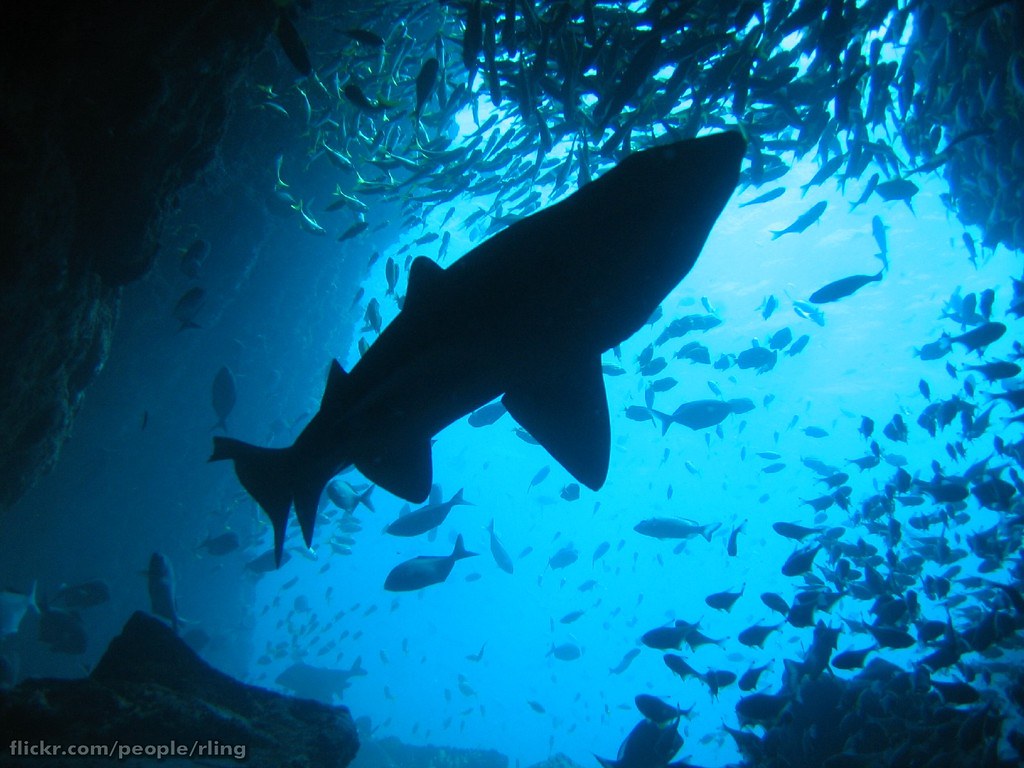Most of the species of shark we have discovered are cold-blooded. Being a cold-blooded animal means that you are not able to maintain your temperature when there is a change in the temperature of your surroundings. The distinction between cold-blooded animals and hot-blooded animals can be confusing. To understand the concept of sharks being cold-blooded, we need to explore the idea of cold-blooded vs. hot-blooded animals first.
How do cold-blooded animals and hot-blooded animals differ?
Hot-blooded animals, also known as homeotherms, are able to produce heat internally in their body. These animals maintain a nearly constant body temperature throughout all surrounding temperatures. Warm-blooded animals usually have a higher body temperature than the average of their environment. Some animals showing endothermy are mammals and birds.
Cold-blooded animals, on the other hand, are those who cannot maintain their body temperature when there is a change in temperature in the atmosphere. These animals use external heat sources to warm themselves and in order to regulate their body temperature. Sharks, as we mentioned before, are cold-blooded.
Are most sharks cold-blooded?
Most sharks are not able to maintain their temperature when there is a fluctuation in the temperature of the environment. Their body temperature depends upon the external temperature of the water that they reside in. Sharks generally have body temperature a little higher than that of the environment, as all poikilothermic animals do.
If the hotness of the water escalates, so does the temperature of the shark’s body. Similarly, the shark’s temperature decreases when the temperature of the water drops. This can use a lot of the shark’s energy. So, the sharks rise to the top of the ocean, where the water is comparably warmer. This makes sure that the body temperature of the sharks rises without much extra effort from their side.
When sharks rise to the top of the ocean in order to conserve energy, a lot of bodily functions are aided. For example, the food is digested easily, the muscle activity of the shark is improved, and their metabolism is boosted. When the shark is in the depths of the ocean where the water is cold, it has to use a lot of its energy to do basic functions such as hunting, digesting food, and traveling in the ocean.
When the bodily functions such as digestion are slowed down, the shark has to use a lot of the energy conserved during its trip to the upper layer of the ocean to perform these basic functions.
What species of sharks are warm-blooded?
Now, let’s see which species of sharks are not cold-blooded and how they perform their essential functions.
Most sharks are ectothermic. However, there are a number of species of sharks that are endothermic. These sharks are warm-blooded because they are able to elevate their body temperature a little higher than the average atmospheric temperature. But their temperature is almost always constant like mammals. This regards them as not completely warm-blooded but having some endothermic or warm-blooded abilities.
Species of sharks that have warm-blooded abilities are Salmon Sharks, Porbeagle Sharks, Longfin Mako Sharks, White Sharks, and Shortfin Mako Sharks. This family of sharks has the unique ability to raise the temperature above the average atmospheric temperature. This is done because they have a unique highly-developed net of blood vessels. This network of blood vessels is essential in retaining the heat that is produced by their muscles.
The extra heat in this family of sharks is produced by a strip of red muscle in the central core of the shark’s body. The rete mirabile, which is the network of blood vessels, surrounds this aerobic muscle. The rete mirabile develops a countercurrent flow of blood in the shark’s body which makes it easier for ions, gasses, and heat to be exchanged faster and easier.
When increased muscle activity in these sharks generates heat, it is exchanged back into the blood through the process mentioned above. From the blood, it then goes back into the muscles. This makes sure that the body of the shark has enough heat regardless of any changes in the temperature of the water. When this constant exchange of heat is happening in the body, the temperature remains a little higher than the surroundings.
Some sharks are also capable of keeping the integral parts of their body warm. They keep the essential organs such as the brain and the eyes to make sure that when their muscles and metabolism slow down, their functionality is not compromised. Behavioral thermoregulation is also seen in some sharks, where the fish rise to the top during safe hours to digest food faster. This conserves their energy.
Conclusion
Like other functions, even the ability to maintain the optimum blood temperature also varies in different species of shark. As we have seen, most sharks are ectothermic and not able to maintain their temperatures. However, there are also those who have specialized muscles and often have additional endothermic abilities.







